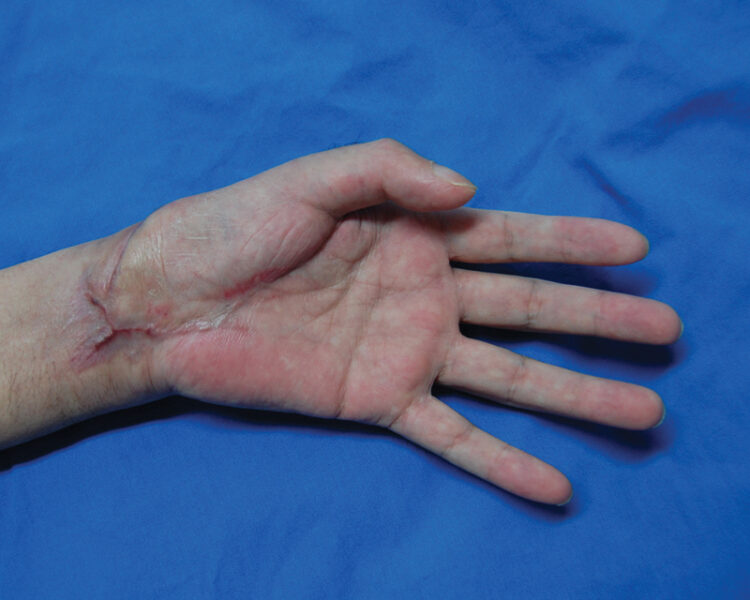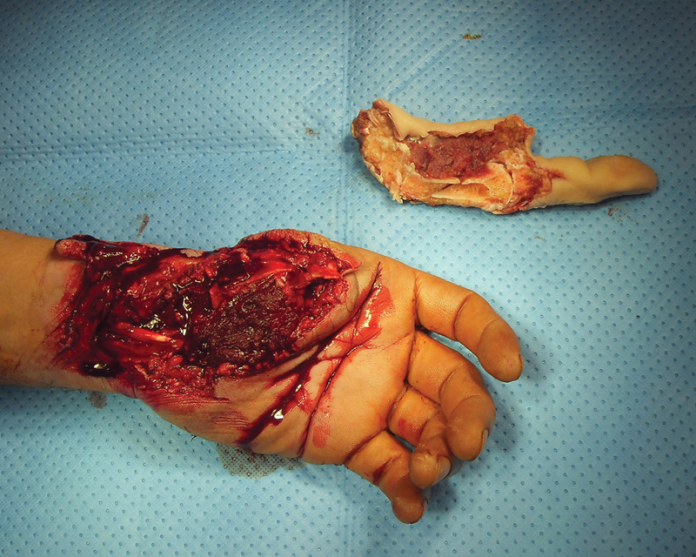- Electrical saws have the potential to cause severe injuries.
- Many of the injuries result in damage to the finger and thumb tendon, nerve and vascular damage or amputation.
- Long-term outcomes of these injuries include functional and sensory deficits [1].
This case is of a 44-year-old male patient who presented to the emergency department with his thumb amputated because of an accidental injury while using an electrical saw.
Physical examination showed that the thumb was severed at the radial part of the hand. ربح المال عن طريق اللعب Whereas, the margins of both the thumb and the hand were damaged and crushed. However, the circulation of the index finger was still intact.
The wound was further explored under general anaesthesia and with tourniquet control. Further examination showed that there was no damage to the radial artery. The superficial palmer branch of the radial artery on the thenar area of the amputated thumb was found intact with the venae comitantes. رهان الخيل
The wound was fixed with K-wires after thorough debridement. The standard postoperative protocol for replantation was followed and the K-wires were removed after 4 weeks.

Follow-up after 4 months of replantation showed that there was an extension lag at the interphalangeal and metacarpophalangeal joints of 15 degrees. The range of motion was measured to be 15 to 45 degrees at intraphalangeal joint, whereas, 15 to 40 degrees at metacarophalangeal joint.
References
- Chung, K. C., & Shauver, M. J. (2013). Table saw injuries: epidemiology and a proposal for preventive measures. Plastic and reconstructive surgery, 132(5), 777e.




